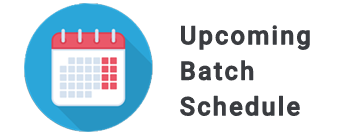
In a nutshell, the scrum team structure is the way in which tasks are divided up between the members of the team. For Scrum, the Roles and responsibilities are also assigned to each team member in order to ensure that work is accomplished as efficiently as possible. In this article, we will provide a brief overview of these key concepts so that you can better understand how they impact your scrum team’s ability to deliver quality products on time.
Scrum Team roles and responsibilities structure is a very important part of the scrum framework. It’s an essential element which helps to define how many roles are defined in scrum within the team. The scrum team structure has been designed in such a way that all members of the team can easily understand it.
What Is Scrum Team Structure?
The scrum team structure is a set of guidelines or rules which help to define roles and responsibilities for each member of the team. These rules are based on the Scrum framework, and they are used to make sure that everyone understands their respective role and responsibility.
In simple words, scrum team structure defines who does what and when. This makes sure that everyone knows how to perform their tasks at any point in time.
It also helps to keep track of who is doing what and when. A lot of things happen during the sprints, so keeping track of them becomes difficult if you don’t have a proper team structure.
Furthermore, having a defined scrum team structure helps to improve communication among team members as they know exactly what their role is and when do they need to start performing their task.
In short, scrum team structure helps your team to work efficiently and effectively.
Most teams today are made up of a scrum master, product owner, developers, testers and other support staff. A scrum master oversees the team’s Scrum process and facilitates communication between these different groups. Many organizations offer certification programs to individuals who want to become scrum masters. This Scrum Master Certification Online can give you the skills you need to better manage a team of developers. FITA Academy offers this online certification program and you can get started right away.
Important Components Of Scrum Team Structure
Scrum team structure consists of the following four main components:
- Product Backlog Items (PBI)
- Sprint Planning Meeting
- Daily Stand Up meeting
- Retrospective meeting
Let’s take a look at these components one by one.
Product Backlog Items(PBI)
These items are known as user stories. They are written in plain English and describe what needs to be done. Each PBI should contain information about the business value, acceptance criteria, risks associated with it, etc.
A PBI must always begin with “As a” and end with “So that”.
For example – As a customer, I want to buy a new laptop. So that my laptop gets repaired quickly.
You may wonder why there are two different sections in the PBI. One section contains the value proposition, and another describes the benefit to the team.
This is because a product backlog item can be divided into two parts. One part gives the description of the value added to the users, while the other part shows the benefits to the team.
However, in some cases, where the product owner cannot clearly identify the value add statement, it is better to have only one section.
You can even split the PBI into multiple smaller ones and then combine them later. For example, if a user story states that “I want to buy a new car”, you can create three separate PBIs like “Buy a New Car”, “Repair My Old Car”, and “Save Money With a New Car”.
Sprint Planning Meeting
The sprint planning meeting takes place before every sprint starts. During this meeting, the team decides on the size of the sprints and sets the dates for the same. Also, the team plans out the tasks to be performed and determines the order in which they will be performed.
During this meeting, the team discusses the current state of the project and identifies blockers. Once a blocker is identified, the team tries to find a solution to that particular issue.
Daily Standup Meeting
Every day, after every sprint finishes, the team holds a stand-up meeting. At this meeting, every member of the team shares his/her performance for the previous day. The team leader or a designated person from the team observes each member and asks questions related to daily activities.
Retrospective Meetings
After every sprint, the team has a retrospective meeting. In this meeting, the entire team reviews the process and identifies areas where improvement can be made.
To get more information about Important Components Of Scrum Team Structure from CSM Training in Bangalore to become a Scrum Master and learn more about the roles and responsibilities of the Scrum Team members, you can contact FITA Academy directly today.
How To Manage Your Scrum Teams?
Now that we have discussed everything there is to know about scrum team structure, let us discuss how to manage your scrum teams.
It is important to understand that not all people on the team are required to be present at all meetings. Some people may be available for a few hours per week, but others may not be able to attend any meeting due to personal reasons.
Therefore, it is recommended to keep the number of active members on a team to less than 20% of the total number of members. If more than 15 members are working together on the same task, it becomes difficult to manage things properly.
Also, make sure that the team members who are absent during certain meetings do not feel left out. It is best to schedule these meetings during off-peak times so that everyone feels comfortable.
Scrum Master Role
To hold the team accountable, a scrum master is assigned to the team. They acts as an advisor, coach and mentor to the team.
It is the responsibility of the scrum master to assist the team by observing their work and giving them feedback as needed. Additionally, a scrum master ensures that the team is met with its objectives and reaches its goals in a timely manner.
Role of Product Owner
A product owner is responsible for creating and maintaining the product backlog. They creates an initial set of products based on requirements gathered from stakeholders.
They also keeps track of the progress of the project and makes sure that the team does not fall behind with respect to the delivery date.
Role of Product Manager
A product manager is responsible for managing the development team. This includes assigning tasks to the developers, monitoring their productivity, ensuring that the team completes the tasks within the predefined time limit and making sure that the team delivers quality code.
Product managers should ensure that the team follows the processes laid down in the agile manifesto. They also help the team identify problems early and take corrective action.
Role of Development Team
The development team consists of individuals who are skilled enough to complete the tasks assigned to them.
The development team should be self-organizing. Each developer should be able to decide what they needs to learn and when they need to learn it.
The development team must be flexible enough to change their approach if needed.
The development team should be willing to accept criticism and suggestions from other team members.
Role of QA Team
The quality assurance (QA) team tests the application developed by the development team before releasing it to production.
They perform regression testing after each release.
They also test the new features added to the existing application.
Role of Release Management Team
The release management team is responsible for planning releases and deploying applications into production.
This team will plan the release cycles and assign resources accordingly.
It will also coordinate between different teams involved in the process like development, testing, documentation etc.
This team will also monitor the performance of the application once deployed in production.
Scrum Methodology
As mentioned above, scrum methodology focuses on delivering business value through iterative cycles. We now discuss what exactly is meant by ‘iteration’ in Scrum.
In traditional waterfall methodologies, all the development happens in a single phase. However, in agile methods, iterations are used to deliver software. Each iteration lasts for a specific time period and consists of a series of tasks which should be completed within that time frame. These tasks are known as user stories. To up-skill this Methodology from the best Scrum Master Certification in Chennai for your career, get certified as a Scrum Master from FITA Academy.
User Stories
In order to determine what needs to be done in the next iteration, you need to define user stories. The user story is like a short description of what the customer wants to achieve. For example, if the team is building a mobile application, then a web app will require two user stories. One will describe the features of the web app, and the other one will describe the features of a mobile app.
Each user story contains a list of user actions and events describing the steps needed to complete the feature.
For instance, one user story could look something like this:
As a user, I want to buy books online using my phone. So when I click on add book button, it should display options to select books. When I choose books, it should show me the details of the selected books.
Team Size
A team’s size is determined by a number of factors, including the project’s complexity. When it comes to simple projects, a team can consist of 5 to 7 developers, while for more complex projects, a team can even include up to 25 developers.
Agile Methods vs Waterfall Model
An organization can benefit from both an agile model and a waterfall model. The advantage of agile is its flexibility, while the advantage of a waterfall is its stability. Based on your organization’s culture and existing processes, you must decide whether to implement an agile or waterfall model.
Waterfall Model
This is the most widely adopted approach followed by many organizations. This methodology involves planning, design and implementation phases. It is suitable for large-scale projects that have well-defined scope and duration.
Agile Model
This is the most commonly used strategy among companies today. In this technique, the whole process is divided into smaller chunks called iterations. The teams follow an incremental approach so they can make changes without affecting the overall schedule.
End Summary
Scrum provides a framework for building software products based on iterative development cycles. It focuses heavily on collaboration between developers and product owners. The goal of the Agile methodology is to provide a rapid feedback cycle while maintaining quality standards.
Scrum helps develop software products by defining a set of rules that allow the team to work together efficiently. They ensure that the team members understand and follow these rules diligently so as to achieve mutual success. Since Scrum doesn’t change the way we think, it helps us become more creative and innovative than ever.
We hope that you were able to understand what is Scrum Team? A Scrum Master’s role and how does he contribute to the success of the project? Moreover, we discussed the key responsibilities of each member of the scrum team, including the product owner. There are various tools available such as Jira, Trello, Asana etc., which help in managing the entire project efficiently.

